Ballet appreciated as form of valuable cultural exchange
Updated: 2015-02-23 11:08
By Liu Chang(China Daily USA)
|
||||||||
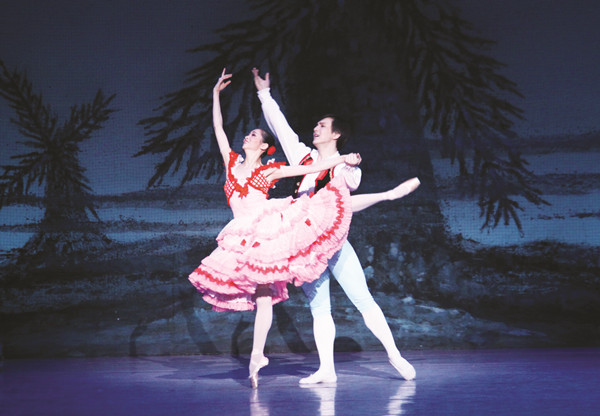 |
|
Wang Ye and Ma Xiaodong as Kitri and Basilio, guest artists from the National Ballet of China, in Richmond Ballet’s Don Quixote at the Carpenter Theatre in Richmond, VA on February 20. Provided to China Daily |
Unlike opera and drama, ballet dancing, a form of body art, involves techniques of physical movement to express a dancer's emotion, said Wang Ye, a principal dancer with the National Ballet of China. Although body language is harder to understand than verbal communication, Wang believes it is open to an audience's interpretation, adding that, "When I dance, I want you to be able to understand my expression to you and [for you to] know what I am doing." Wang joined ballet dancers from the National Ballet and the Richmond Ballet in Virginia, where they performed Don Quixote on Feb 20 at the Carpenter Theatre in Richmond.
Wang, who played the lead role of Kitri, said she was impressed by the emotional state of the dancers in the Richmond Ballet troupe.
"Everyone is passionate in dance," she said. "And the master of the Richmond Ballet interprets Don Quixote to me very clearly."
She has performed in the National Ballet of China's productions of Don Quixote, Le Corsaire, Romeo and Juliet, Serenade and In the Middle, Somewhat Elevated. She began studying ballet at the age of 10 for seven years consecutively before a decade-long career in the National Ballet. She recalled those years as a mix of hardship and perseverance.
"It is not limited to the ballet dancing, because whatever profession, it involves hardship," said Wang, who in her spare time enjoys shopping and going to cinema with friends and reading books. "I felt it was dull in the middle of my learning years. But I love dancing, and gradually found ballet dancing is such a beautiful thing in life. So I gained a deeper understanding of why I want to dance and how to dance."
Although it was Wang's first time in Richmond, she has been on several international tours with the National Ballet. "Every time I go to a new place, I gained different experiences, which zooms in a new life horizon in my eyes."
Stoner Winslett, the founding artistic director of the Richmond Ballet, believes that ballet dancers can inspire by demonstrating unlimited human potential and beauty. She said that the vision of her organization is to help transform the world through the unique, special power of dance.
The Richmond Ballet this year initiated the New Road to China program. From May 22-30, the troupe will perform at the Meet in Beijing Arts Festival and stop in Dezhou, Jinan, and Shanghai.
Wang said that friendships between the Chinese and American dancers have formed. "Soon I will meet with them … in Beijing," said Wang.
Cody Beaton of the Richmond Ballet, who played the role of Kitris' friend, also became friendly with Wang. "It's a good experience for both of the troupes," said Beaton, who said that she was excited to go to China to perform in May.
"Wang and Ma bring such a beautiful light to the Richmond Ballet," said Matthew Frain of the Richmond Ballet. "Working with dancers from a completely different side of the world is a valuable experience."
Ma Xiaodong, another principal dancer in the National Ballet, plays Basilio in Don Quixote. Ma, whose professional trajectory is similar to Wang's, studied ballet for seven years before joining the National Ballet of China at age 17.
"In my childhood, rarely did many children, especially boys, chose to learn dancing," Ma said. "But artistic accomplishment comes through repetitive and hard training, when a dancer’s artistic temperament is formed."
Caroline Irwin, a high school student who performs ballet, said the opening scenes are outstanding.
"I think the Chinese dancers are really amazing," she said. "Ballet dancing is very time-consuming and really hard work; they are so good."
Bryan Whitfield, a retired trustee of the Richmond Ballet, said the performance led by the Chinese dancers is "marvelous and sensational. I really enjoy the spectacle and dancing by many principals. Having the Chinese guest is a special privilege and honor, too. The Chinese ballerina is so light on her feet. Her partner is amazing with his leaps and jumps. To be a ballerina, a person certainly needs to love hard work and persist at it. They showed the years of dedication in artistry."
Li Hong, minister counselor of the Office of Cultural Affairs at the Chinese Embassy, said she was glad to hear from the Richmond Ballet troupe that the two Chinese dancers are "beautiful both outside and inside." Li appreciates Wang and Ma for bridging cultural ties.
Brett Bonda, managing director of the Richmond Ballet, said that part of the mission of the organization is to preserve the classic works. "We feel it’s very important for our dancers and audiences to experience this wonderful ballet," he said.
Bonda said he aims to have a true outreach through the New Road to China program. He has wanted to invite some of the Chinese culture to the Richmond community. So inviting the dancers of the National Ballet of China to become the lead roles in the ballet performance was a way to achieve it. Bonda visited China last May and met with the National Ballet troupe. The troupe pleasantly agreed with Bonda's idea, and chose Wang and Ma to be in Don Quixote.
-
 Texas Lunar Festival fun
Texas Lunar Festival fun 
 'God of Wealth' promotes US pears
'God of Wealth' promotes US pears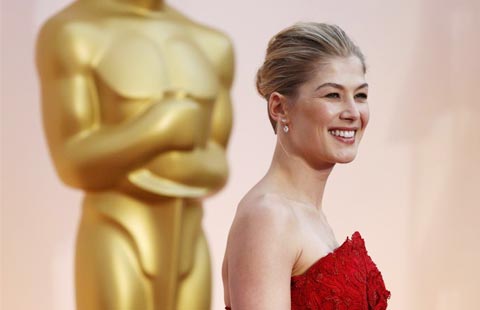
 Stars arrive at 87th Academy Awards
Stars arrive at 87th Academy Awards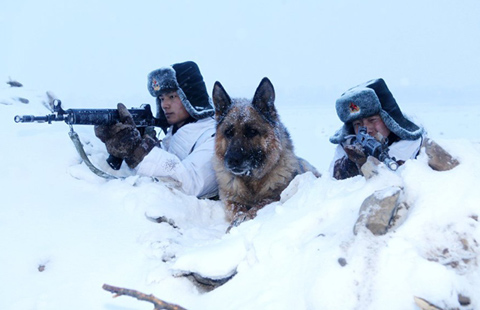
 Man's best friend: border soldiers and a military dog
Man's best friend: border soldiers and a military dog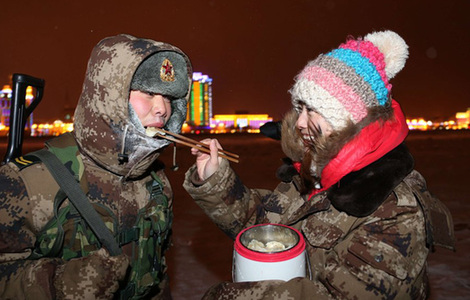
 Couple sentries guard China's northern border during traditional holiday
Couple sentries guard China's northern border during traditional holiday
 Another winter storm to pummel eastern United States
Another winter storm to pummel eastern United States
 2015 Film Independent Spirit Awards
2015 Film Independent Spirit Awards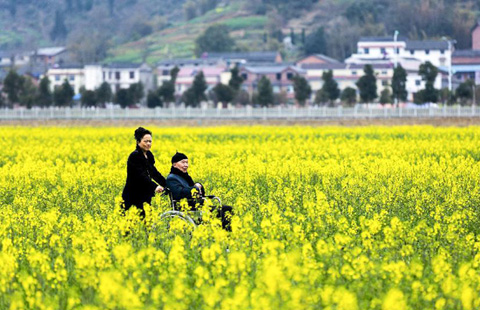
 Beautiful sceneries of early spring flowers around China
Beautiful sceneries of early spring flowers around China
Most Viewed
Editor's Picks

|

|

|

|

|

|
Today's Top News
Savoring benefits of medicinal foods
Alejandro G. Inarritu wins Best Director for 'Birdman'
Chinese enjoy shopping, massages and travel to ring in New Year
Foreign minister to preside at UN
Innovation bright spot as economy slows down
Ballet appreciated as form of valuable cultural exchange
Climate pact offers improved relations
Four Chinese among top 100 for Mars One project
US Weekly

|

|







